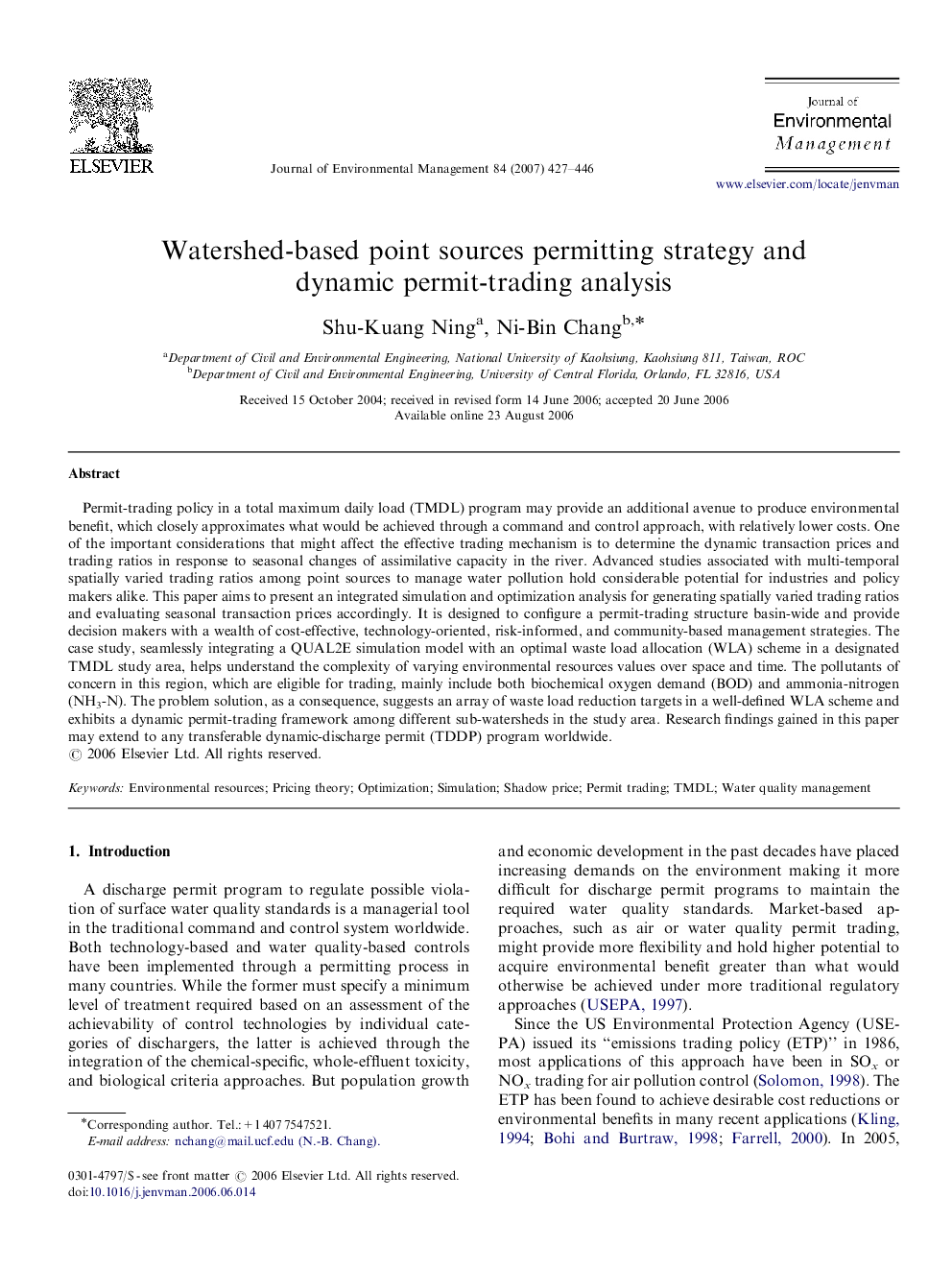| Article ID | Journal | Published Year | Pages | File Type |
|---|---|---|---|---|
| 1058647 | Journal of Environmental Management | 2007 | 20 Pages |
Permit-trading policy in a total maximum daily load (TMDL) program may provide an additional avenue to produce environmental benefit, which closely approximates what would be achieved through a command and control approach, with relatively lower costs. One of the important considerations that might affect the effective trading mechanism is to determine the dynamic transaction prices and trading ratios in response to seasonal changes of assimilative capacity in the river. Advanced studies associated with multi-temporal spatially varied trading ratios among point sources to manage water pollution hold considerable potential for industries and policy makers alike. This paper aims to present an integrated simulation and optimization analysis for generating spatially varied trading ratios and evaluating seasonal transaction prices accordingly. It is designed to configure a permit-trading structure basin-wide and provide decision makers with a wealth of cost-effective, technology-oriented, risk-informed, and community-based management strategies. The case study, seamlessly integrating a QUAL2E simulation model with an optimal waste load allocation (WLA) scheme in a designated TMDL study area, helps understand the complexity of varying environmental resources values over space and time. The pollutants of concern in this region, which are eligible for trading, mainly include both biochemical oxygen demand (BOD) and ammonia-nitrogen (NH3-N). The problem solution, as a consequence, suggests an array of waste load reduction targets in a well-defined WLA scheme and exhibits a dynamic permit-trading framework among different sub-watersheds in the study area. Research findings gained in this paper may extend to any transferable dynamic-discharge permit (TDDP) program worldwide.
